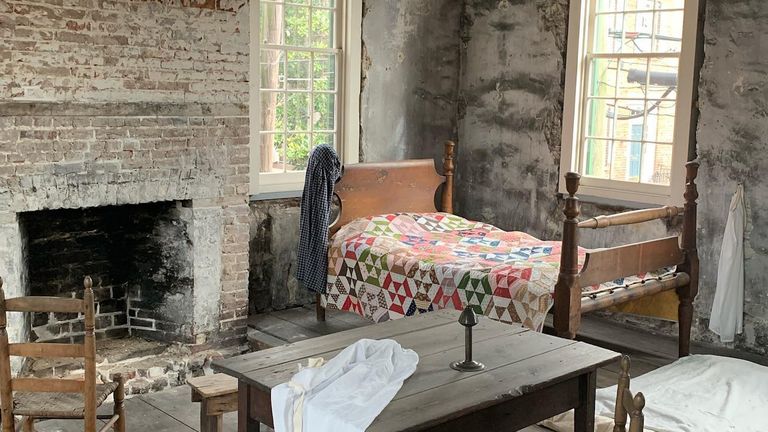From House Beautiful:
"To be honest, I was a little surprised to hear from you," says Joseph McGill, Jr. at the beginning of our interview on The Slave Dwelling Project. McGill started the endeavor to preserve and spotlight onetime slave quarters in an effort to reframe the narrative of American history from the perspective of enslaved people, rather than the enslavers. "You hear 'House Beautiful,' and these aren't exactly the buildings you think when you think beautiful houses," he explains.
Frankly, McGill is right—and that idea is a large part of what drove him to start The Slave Dwelling Project over a decade ago. "11 years ago, when I started, one could visit a plantation or walk through the historic city of Charleston and see beautiful buildings built prior to the Civil War, and you could hear about the magnificence of these buildings, but nowhere in the interpretation was there any language about who was responsible for that building," he says. "Whose labor was stolen for that building to be there—who physically built that building? Who cut down those trees or made those bricks? Who provided the wealth for the person who took the credit for building it—or who was known for building it?" (Read more.)
New York City and the persistence of the Middle Passage. From The Nation:
ShareIn the middle of 1856, the soon-to-be-celebrated poet Walt Whitman visited an impounded slave ship in Brooklyn. The taking of the ship was an unusual occurrence, as it was one of the few illegal slavers seized by an otherwise lethargic Washington, D.C., and Whitman wanted to give his readers a tour of the vessel, which had been designed to add even more enslaved laborers to the millions already ensnared in this system of iniquity, including of its hold, where those victimized were to be “laid together spoon-fashion.”
Whitman’s keen journalistic interest was a response to the feverish political climate in his homeland, featuring ever more overwrought cries demanding the relegalization and reopening of the Atlantic slave trade. Officially, this branch of flesh peddling had been rendered illegal by Britain in 1807 and by the United States in 1808, but it had continued nonetheless, with boatloads of kidnapped Africans being transported to the Americas, especially Brazil, Cuba, and the United States. It was likely that some of Whitman’s readers in New York City—the citadel of this illicit commerce—would have taken a decided interest in his grim reportage.
John Harris’s The Last Slave Ships offers a more comprehensive portrait of the illegal slave trade in the Atlantic, starting with the last slave ships to dock in New York Harbor. Mining the historical archives in Spain, Portugal, Cuba, and the United States, Harris demonstrates how, even as slavery was being abolished in the Northern states, it continued to flourish, since the slave system was not confined simply to below the Mason-Dixon Line. The financing of the slave trade’s illegitimate commerce was sited heavily in Manhattan: The ships passed through the waterways of the city’s harbor, and the denizens of Gotham also enjoyed the profits of this odious system, even as many of them publicly denounced it. After all, slave ships required crews, not to mention the need to grease the palms of corrupt officials at the harbor and elsewhere with attractive bribes. In sum, the wealth produced by slave labor built not only a region but a nation. Like Charleston, S.C., and Galveston, Tex., New York City benefited from the trade in human souls—which, in a sense, continues to undergird Wall Street. (Read more.)




















No comments:
Post a Comment